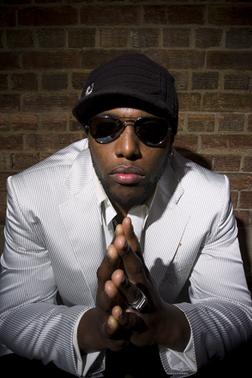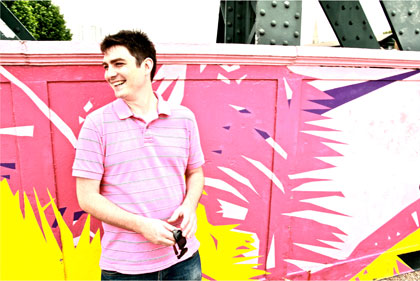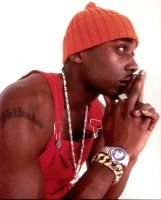Showtime! - UK dancehall on the rise again | reviews, news & interviews
Showtime! - UK dancehall on the rise again
Showtime! - UK dancehall on the rise again
A new event aims to shine new light on British/Caribbean music
This month sees an audacious attempt to showcase British dancehall music, when the Cargo venue in Shoreditch hosts the multi-artist revue Showtime!. The Heatwave collective have brought together vocalists from various UK underground scenes, linked by a strong influence from the high-energy Jamaican sounds of the past 30 or so years. While many of the artists involved have found success in crossover scenes like rave, jungle, grime and garage, the appeal of dancehall itself (also known by the overlapping terms bashment and ragga) has traditionally been restricted to predominantly black audiences.
 However, various factors including the increasing blurring of British and Jamaican slang and figures of speech, and the support of young white DJs like Gabriel Heatwave on Rinse FM and Radio 1's Toddla T, have led to a wave of popularity with new audiences, and British dancehall is increasingly making waves across cultures and subcultures. From the late Smiley Culture's 1980s hits, via names like Glamma Kid (pictured right) and Skibadee (pictured bottom) to young rising star Lady Chann, British artists with a Caribbean heritage have for many years expressed shifting social mores and identities via their unique place in pop culture.
However, various factors including the increasing blurring of British and Jamaican slang and figures of speech, and the support of young white DJs like Gabriel Heatwave on Rinse FM and Radio 1's Toddla T, have led to a wave of popularity with new audiences, and British dancehall is increasingly making waves across cultures and subcultures. From the late Smiley Culture's 1980s hits, via names like Glamma Kid (pictured right) and Skibadee (pictured bottom) to young rising star Lady Chann, British artists with a Caribbean heritage have for many years expressed shifting social mores and identities via their unique place in pop culture.
And though the scene's lyricists may on occasion tend towards the hyper-aggressive, which inevitably draws the most prurient media attention, there is an upbeat, celebratory and positive energy in the music and dances that is sometimes overlooked. An event like Heatwave's Showtime! is, then, a barometer of the social and racial attitudes of young London, as well as hopefully a riotously entertaining and energetic show. Gabriel Heatwave spoke to theartsdesk and explained how recent subcultural and technological shifts have brought new audiences to the sound he has been supporting for the last decade.
The “UK funky” sound – a tough, bass-heavy variant on house music, often with dancehall-influenced vocals that has found favour with pirate radio and rave DJs over the last few years – has been a key to the crossover, he says. “I think funky also marked a shift in UK rave culture towards 'raving' again,” he explains. “By which I guess I mean it's about dancing and partying first and foremost. The relationship that grime and dubstep have to Jamaican music is more about MCs clashing on stage, heavy sound systems and bass, dubplates [one-off cuts of tracks, with DJs competing to have the newest and rarest] and so on. Whereas funky, like grime/dubstep's predecessor in the late Nineties, garage (probably the last era when dancehall was as popular in the UK as it is now), is more about partying, which makes the link with dancehall/bashment more direct.”
Watch the video for Lady Chann's "Sticky Situation"
“The internet is definitely hugely important in helping people get to grips with dancehall,” he continues. “YouTube and MP3s have made Jamaican music massively more accessible than it was when you had to buy 7-inch vinyl from a limited number of record shops. When I started buying dancehall you had to be pretty seriously committed to get hold of new tunes; now they are a couple of clicks away. I guess the lyrics being translatable is perhaps also part of it – and you can watch the dances on YouTube.”
 Those dances can be offputting to the uninitiated, as part of dancehall culture involves outrageously sexual and eye-poppingly acrobatic moves. Gabriel (pictured left) reassures the cautiously curious though: “You definitely don't need to know the 'right' moves. It's a personal thing really; you can bubble [low-key dancing] on your own or with a partner, or be more adventurous if you've got the technique. Dancehall dancing can be pretty exhibitionist but dancehalls are also about giving people space to do their own thing. Though I guess if you're trying to pull out moves that you can't really do that can lead to embarrassment!”
Those dances can be offputting to the uninitiated, as part of dancehall culture involves outrageously sexual and eye-poppingly acrobatic moves. Gabriel (pictured left) reassures the cautiously curious though: “You definitely don't need to know the 'right' moves. It's a personal thing really; you can bubble [low-key dancing] on your own or with a partner, or be more adventurous if you've got the technique. Dancehall dancing can be pretty exhibitionist but dancehalls are also about giving people space to do their own thing. Though I guess if you're trying to pull out moves that you can't really do that can lead to embarrassment!”
Watch grime rapper/producer Wiley perform dancehall lyrics
On whether dancehall can be accepted as part of Britain's wider musical heritage, rather than as a racially segregated niche scene, he is cautiously optimistic. “I definitely don't see it as something that is only for predominantly black audiences,” he insists, “and the very mixed audiences that our nights attract are proof of its very broad appeal. Dancehall is a global music now: Germany and Japan are hugely significant in the international market. Spain and Sweden host massive reggae/dancehall festivals. Jamaican artists are starting to tour throughout Africa and Latin America.
 “I'm not sure I see it as another subset of the underground either though, partly because of its huge and diverse appeal, but also because of the huge influence that it's had – and continues to have – on other underground genres. Dancehall underpins UK rave music and the two continue to borrow from and lend to each other. I see them as having a kind of equivalence: dancehall is as broad as UK rave, rather than being another subgenre to add to the list of hardcore, jungle, garage, grime, dubstep and funky.”
“I'm not sure I see it as another subset of the underground either though, partly because of its huge and diverse appeal, but also because of the huge influence that it's had – and continues to have – on other underground genres. Dancehall underpins UK rave music and the two continue to borrow from and lend to each other. I see them as having a kind of equivalence: dancehall is as broad as UK rave, rather than being another subgenre to add to the list of hardcore, jungle, garage, grime, dubstep and funky.”
The future of Arts Journalism
You can stop theartsdesk.com closing!
We urgently need financing to survive. Our fundraising drive has thus far raised £49,000 but we need to reach £100,000 or we will be forced to close. Please contribute here: https://gofund.me/c3f6033d
And if you can forward this information to anyone who might assist, we’d be grateful.

Subscribe to theartsdesk.com
Thank you for continuing to read our work on theartsdesk.com. For unlimited access to every article in its entirety, including our archive of more than 15,000 pieces, we're asking for £5 per month or £40 per year. We feel it's a very good deal, and hope you do too.
To take a subscription now simply click here.
And if you're looking for that extra gift for a friend or family member, why not treat them to a theartsdesk.com gift subscription?
more New music
 Album: Ed Sheeran - Play
Another mound of ear displeasure to add to the global superstar's already gigantic stockpile
Album: Ed Sheeran - Play
Another mound of ear displeasure to add to the global superstar's already gigantic stockpile
 Album: Motion City Soundtrack - The Same Old Wasted Wonderful World
A solid return for the emo veterans
Album: Motion City Soundtrack - The Same Old Wasted Wonderful World
A solid return for the emo veterans
 Album: Baxter Dury - Allbarone
The don diversifies into disco
Album: Baxter Dury - Allbarone
The don diversifies into disco
 Album: Yasmine Hamdan - I Remember I Forget بنسى وبتذكر
Paris-based Lebanese electronica stylist reacts to current-day world affairs
Album: Yasmine Hamdan - I Remember I Forget بنسى وبتذكر
Paris-based Lebanese electronica stylist reacts to current-day world affairs
 theartsdesk on Vinyl 92: Marianne Faithful, Crayola Lectern, UK Subs, Black Lips, Stax, Dennis Bovell and more
The biggest, best record reviews in the known universe
theartsdesk on Vinyl 92: Marianne Faithful, Crayola Lectern, UK Subs, Black Lips, Stax, Dennis Bovell and more
The biggest, best record reviews in the known universe
 Blondshell, Queen Margaret Union, Glasgow review - woozy rock with an air of nonchalance
The singer's set dripped with cool, if not always individuality
Blondshell, Queen Margaret Union, Glasgow review - woozy rock with an air of nonchalance
The singer's set dripped with cool, if not always individuality
 Music Reissues Weekly: Chiswick Records 1975-1982 - Seven Years at 45 RPM
Triple-album 50th-anniversary celebration of the mould-breaking British independent label
Music Reissues Weekly: Chiswick Records 1975-1982 - Seven Years at 45 RPM
Triple-album 50th-anniversary celebration of the mould-breaking British independent label
 Album: Josh Ritter - I Believe in You, My Honeydew
The alt-country singer's latest isn't consistent but does hit highs
Album: Josh Ritter - I Believe in You, My Honeydew
The alt-country singer's latest isn't consistent but does hit highs
 Album: David Byrne - Who is the Sky?
Born to be weird
Album: David Byrne - Who is the Sky?
Born to be weird
 Edinburgh Psych Fest 2025 review - eclectic and experimental
Underground gems and established acts in this multi-genre, multi-venue day long festival
Edinburgh Psych Fest 2025 review - eclectic and experimental
Underground gems and established acts in this multi-genre, multi-venue day long festival

Add comment